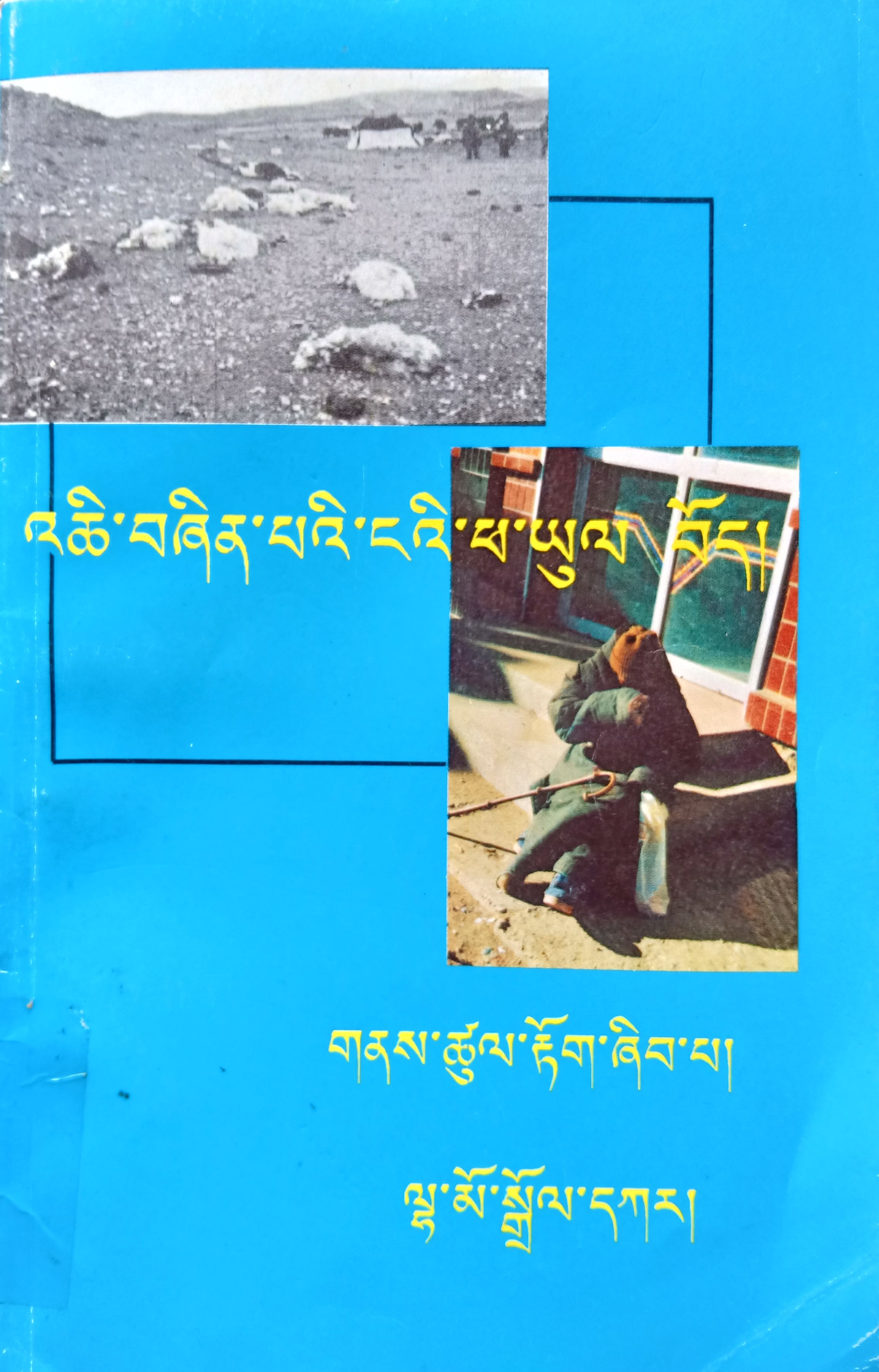Chinese government inspection reveals no improvement in stopping poisonous gold mining in Tibetan areas despite Xi Jinping’s ‘ecological civilisation’ rhetoric

A Chinese central government inspection conducted from 27 to 28 July in the prefecture found little improvement in the environmental damage caused by excessive gold mining despite attempts at improvement two years ago in keeping with president Xi Jinping’s much-publicised rhetoric on ecological protection.
The inspection was part of a new round of environmental inspections carried out in six provincial-level regions and two centrally administered state-owned enterprises in Gansu, Qinghai, Chongqing, Shanghai, Fujian, and Hainan. The inspections were first launched in 2016 as part of a stricter environmental protection policy.
The latest inspection in Machu and Sangchu found that various gold mining companies such as the state-owned Gansu Maqu Gold Industry Co., Ltd. and the Xiahe County Binghua Mining Co. Ltd. had not practiced mining operations according to the procedure stipulated by the environmental authorities, reported the Beijing News on 29 August.
The report noted that the mining companies had polluted the environment through random disposal of slag waste, discharging wastewater indiscriminately and other “serious” environmental transgressions. It further noted that the local authorities and mining companies had made slow progress on mine renovation and restoration work thus aggravating environmental risks.
The environmental inspectors found that illegal discharge of mine water, mismanagement of tailings dam and leachate collection pond, abandoned slag yard in the mining area, etc., had caused serious environmental destruction. While entering the Gansu Maqu Gold Industry Company (hereinafter ‘Gold Industry Company’), which is the largest state-owned gold mining and dressing enterprise in Machu County, the inspectors saw ore scattered everywhere on both sides of the 50-meter ore transport channel as the original enclosure facilities remained damaged. Small and large piles of abandoned soil and slag were stacked along the mountain. A slag pile more than 10 meters high was located close to the mining office. The mining pits left behind by open-pit mining had not yet been treated and a large amount of discarded ore and slag produced by underground mining had been stacked randomly at the entrance of the mine cave, along the foot of the valley slope and by the roadside.

Poisoning Class II Water Body
The mine water flowing from the No. 1 and No. 2 mines of the Gold Industry Company was found discharged into the Gurchu river, a Class II water body, through two cement pipes of 30 to 40 centimeters thick. The daily discharge of more than 1000 cubic meters of toxic water violates the requirement in the company’s environmental impact assessment approval that “strictly prohibits draining mine water”. The Gurchu eventually flows into the Machu (Yellow River).
According to the standards set by the Chinese environmental authorities, Class I water bodies are regarded as the best and Class V as the worst sources of drinking water. Established standards determine that only Class II water quality can be used as drinking water source. Wang Zhansheng, a professor with the Department of Environment Science and Engineering at Tsinghua University had warned that China had few Class II water bodies and only up to one-half of surface water sources could meet the Class II level.
At the Gannan Jinxiang Metallurgical Co., Ltd., the mineral processing waste residue had been temporarily stacked on both sides of the open space and the road with no measures in place to block seepage. Only at the time of the inspection did the company begin transferring the waste to the tailings dam. By the time the inspectors arrived, there were still about 150,000 tons of waste residue that had not been transferred. Many leakage points were found under the leachate collection tank of the tailings dam and the concentrations of mercury and arsenic in the leachate were 14.3 ug/L (one microgram per liter) and 354 ug/L respectively, according to the surface water environment. The concentration of hazardous metals exceeds the permissible limits by 285 times and six times respectively.
The situation was similar at the Maqu County Jinma Mineral Processing Co., Ltd., whose management cited prolonged halt in production as the reason for not implementing waste management measures. The company had stacked old waste residue in the open space and valleys leaving tailings dam exposed in a large area.
Persistent problem of cyanide waste disposal
Two years after the first inspection, the problem of disposal of cyanide waste remains unaddressed at the Xiahe Binghua Mining Co., Ltd. (hereinafter ‘Xiahe Binghua’). Prolonged periods of large scale open-pit mining using cyanide to extract gold had done serious damage to the environment.
The Jiagantan Gold Mine, owned by the Xiahe Binghua, had been disposing cyanide waste as general solid waste despite the implementation of the “National Hazardous waste list” since 1 August 2016 that identifies cyanide tailings as hazardous waste. The inspection revealed that this happened due to the company’s shady collusion with a government-owned research institute. In June 2019, the Xiahe Binghua had commissioned the Institute of Geological Disaster Prevention and Control of Gansu Academy of Sciences to prepare the “Implementation Plan for Environmental recovery and treatment of heap leaching residue” that allowed the disposal of cyanide tailings as general solid waste. The inspection further revealed that the total amount of waste residue stacked in the mine was about 9 million tons, of which the heap leaching slag was about 4 million tons, forming a slag heap with a length of 520 meters and a height of 4 to 50 meters.
Firsthand report warned of unrestrained mining in Machu
A firsthand report called “My Dying Homeland, Tibet”, authored and published by a 25 yr-old Tibetan woman named Lhamo Dolkar, had warned of unregulated and extensive gold mining activities in Machu. The report published in 1998 in India was the culmination of several months of undercover journey that she undertook in 1997 to different parts of Tibet to investigate the condition of ordinary Tibetans. It includes chapters on poverty, forced sterilisation, destruction of nomadic pastures, mining, deforestation and photographs of the mines owned by the Gold Industry Company. Dolkar was then living as a refugee in India. She now resides in Europe.

Dolkar had then reported that mining began in the Drongkhog (‘wild yak’s valley’) mountain range from 1981 onwards and the company had plans to mine for 50 years. The Drongkhog range is located in Nyima (Ch: Nima) Township in Machu. The mines owned by Gold Industry Company are located at and around this mountain range. The report includes images and details of at least five different mines in this area.
In the Gurkhog valley, one of the many valleys that crisscross the Drong-khog range, where much of the mining was done, Dolkar had taken a picture of the company office no. 3 that used to employ about 400 workers. Mining at this location began in 1986. Another image of the company’s office no. 1 at the mountain oversaw about 600 workers.
Toxic water endangering lives and polluting environment
In an interview with TCHRD earlier this week, a monk from Nyima Township who now lives in exile in India recalled his 2014 trip to his hometown. (The monk asked to remain anonymous to protect his family in Tibet.) The monk remembered how the upper parts of the Drongkhog range had been made off-limits to both humans and animals, with local Tibetans hired to guard the surrounding pastures, water, and roads. About 800 miners working at the mine were all Chinese. “But not a single Tibetan is allowed in or near the mining areas, not even the Tibetan guards. There is extreme secrecy surrounding the workings of the mining company.”
Before the mines were discovered, there used to be three clusters of nomadic villages in the upper, middle and lower parts of the Drongkhog mountain range. After the mines were discovered in the upper section, local nomads living in the Arik-ru nomadic camp were forced to sell their summer pastures. Arik-ru is one of the seven nomadic camps in the upper parts of the mountain range. Five out of about 20 households had to give up their summer pastures. The monk hails from one of the four nomadic camps in the lower section namely Machu-ru, Riter-ru, Jatsog-ru, and Ramong-ru.
There are other gold reserves that are being discovered in the Drong-khog range indicating that the Chinese state-owned companies have long-term plans to carry on mining activities. In 2014, the monk learned about the discovery of a huge gold reserve along the far edges of the Drongkhog range in the valley named Wabechu. It is not known if the company has started any mining activity at this location.
About the poisonous mine water flowing into the Gurchu river that gets its name from the Gurkhog valley, the monk said, “They [mining company] made a small opening in the Gurkhog valley and used this space to collect the poisonous water flowing from the mines. They let that toxic water seep into the soil. I don’t think they let it flow somewhere safely. A local Tibetan named Rabten has been hired to guard the Gurchu. Nearby there is a bigger river called Chukar, which is also called Chuwar in the local parlance. There used to be numerous rivers and streams flowing in the Drongkhog range but these have all dried up or poisoned due to mining. ”
“Every week, they put some substance into the poisonous water gathering in the Gurchu river to minimise the potency of the poison. I have heard scary tales about this poisonous water. That it causes instant death if it accidentally gets into someone’s mouth. And melts the human flesh exposing only bones. Some mine workers had suffered from peeling skin and lost hair in bunches. It must have caused sickness and death to nomads and their animals but local people are too scared to speak about it.”



